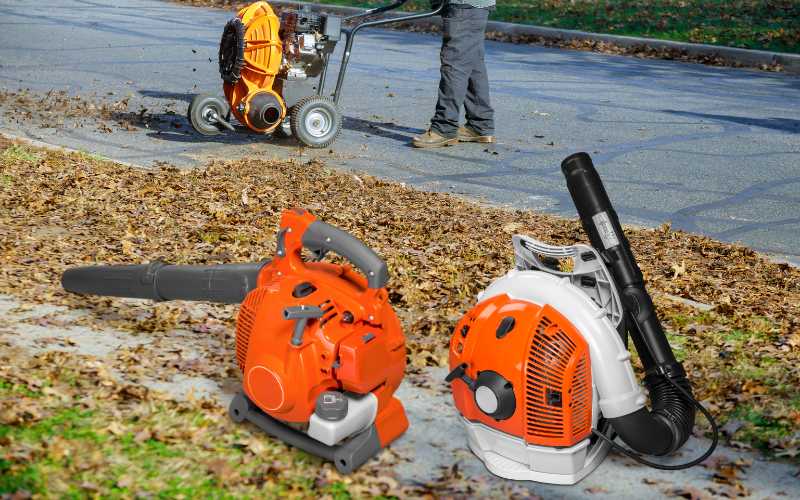All leaf blowers perform the same primary function, whether they’re handheld, backpack or wheeled models. They’re designed for blowing leafs and debris off your yard. There are however, differences in the way they work and how they’re handled.
Some are only meant for blowing leaves while there are some with other functions like vacuuming and mulching of leaves.
There are also variations in the amount of power each of the different models can produce. This can be measured by how much time it takes a particular model to move piles of leaves or debris from one part of the yard to the other.
The power of a leaf blower will also show if it can move wet leaves as well as dry ones, or if it can move heavier debris like wood pieces and small stones.
It’s important that you know these variations when choosing between a handheld leaf blower, a backpack unit or a wheeled walk-behind unit.
Having used all three types, here’s what I think you should know about them.
Table of Contents
Handheld Leaf Blowers
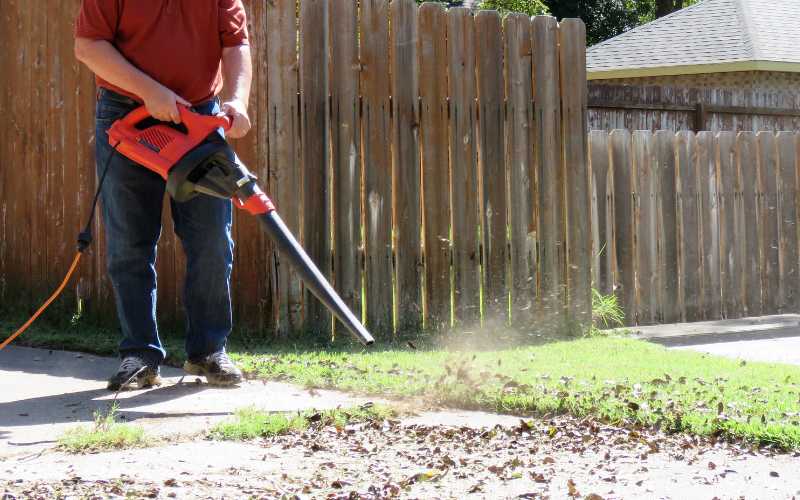
The main feature of handheld leaf blowers is that they’re lightweight and very easy to maneuver. They can be either gas-powered, corded-electric and battery-powered. Out of the 3, gas blowers are more powerful and moves leafs, dirt and debris quickly.
However, they can be very noisy, with some even as noisy as a chainsaw. So, if you live in an area where that will cause an issue between you and your neighbors, you might want to consider other alternatives, like a corded-electric unit or battery-powered one.
Gas-powered leaf blowers also require more maintenance and might require you to mix up the fuel and oil if it has a 2 stroke engine. If you don’t mix up the fuel and oil properly in the correct ratio, then it can become difficult to start, and may even produce more fumes.
That’s it’s why it’s advisable to buy premixed fuel recommended by the manufacturer instead of mixing the fuel yourself. If you decide to mix it yourself, ensure to adhere to the correct fuel to oil ratio.
Gas-powered handheld leaf blowers also weigh more than the other types, weighing about 10 lbs and above, due to the gas engine that powers it. Hence, it will surely get tiring after some time, if you use it for long periods at a stretch.
The good thing about them however, is that as long as there’s gas in the fuel tank, it will continue to work and will help you cover large areas without worrying about the power source.
You should consider getting a corded electric unit if there’s a power outlet within the area you’re trying to cleanup. They’re very lightweight because of the absence of an engine and some are even as powerful as a gasoline unit.
Unlike a gas-powered unit which can be sometimes difficult to start, corded electric leaf blowers starts up easily simply by plugging them in and flipping a switch, and they’re also less noisy.
There’s no gas engine to maintain, no purchasing of fuel and no emissions. Some even come with a vacuum attachment, enabling you to vacuum and mulch leafs with them.
The drawback for corded electric handheld leaf blowers however is that they can be difficult to maneuver due to the power cord you have to pull around with you. Working around trees and other obstacles can also be a huge challenge because of the power cord, and if you have a large yard, the cord also limits how far you can go with it.
Battery-powered handheld leaf blowers are the last option to consider. If you don’t have a very large yard, they’re even the best option to go for, because they’re very convenient to use.
There are no wire cords to worry about and no engine to maintain. As long as the battery is charged, you can use it anywhere around your yard.

The only thing you have to worry about with battery-powered handheld leaf blowers is the runtime. A battery-powered unit won’t stay running as long as a gas-powered unit or corded electric unit, because the battery will eventually run down. The average runtime for battery-powered handheld leaf blowers is 30 minutes.
If you think the job will take more than 30 minutes then you can buy a spare battery or choose another type of leaf blower all together. However, you won’t beat the convenience of a battery powered unit. They’re very quiet and are very powerful as well. Many tool brands now produce batteries that last longer and use more efficient brushless motors.
Most tool brands now also produce batteries that are interchangeable. That is, they work with all their line of tools. So, if you already have some battery-powered tools from a certain brand, maybe it’s time to add a handheld leaf blower that runs on the same batteries.
Backpack Leaf Blowers
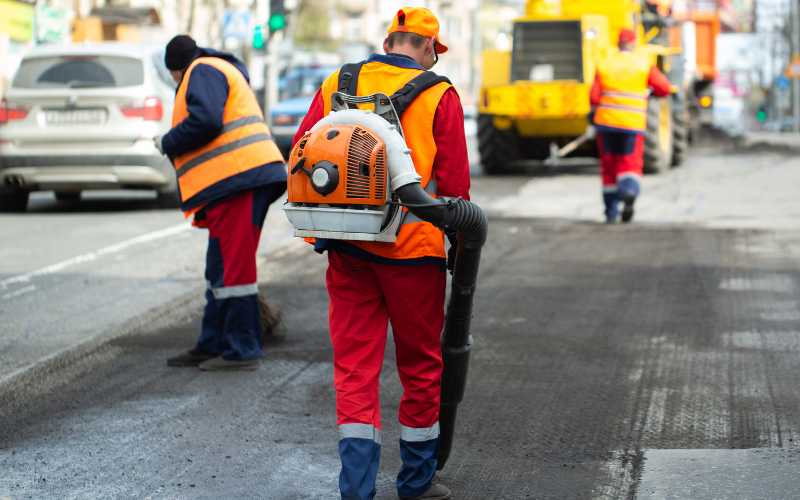
If you have a large yard that will require you to work for an hour or more, carrying a handheld unit around all that time can get very tiring. What you need in this situation is a backpack leaf blower.
They’re heavier than handheld units but since you wear them on your back, the weight is supported on your back and shoulders, making it easier to carry them for longer periods at a stretch.
Backpack leaf blowers come with larger engines and thus are usually more powerful than handheld models. They’re however, much expensive, with price ranging from $150 for very cheap models to over $500 for top models.
There are gas-powered and battery-powerd backpack leaf blowers. The differences and similarities are also the same as with handheld units.
Battery-powered backpack leaf blowers are lighter in weight and less noisy. Gas-powered units are noisier, even more than gasoline-powered handheld units. They’re however more powerful, easier to maneuver and use for longer periods of time. They will go anywhere you go.
Wheeled Walk-Behind Leaf Blowers
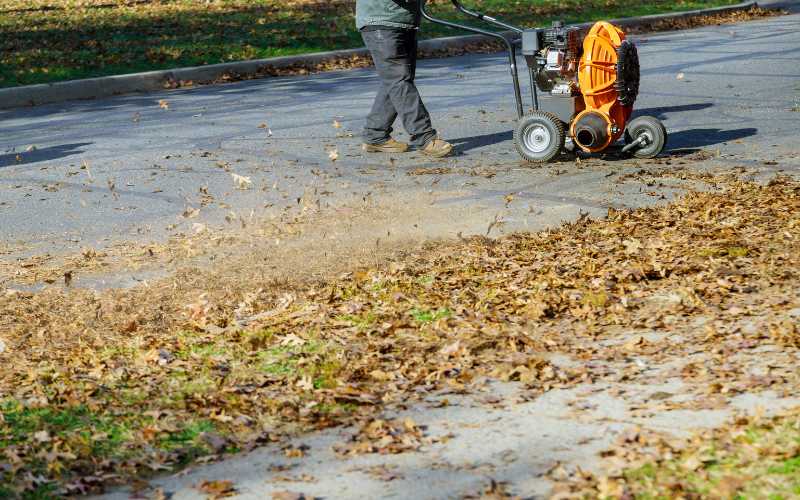
Wheel walk-behind leaf blowers are the most powerful of the 3. They’re however more expensive with the lowest priced units costing over $500.
They’re also more difficult to maneuver because they’re very heavy weighing up to 100 lbs or more. Using a wheeled unit require a very flat terrain, else you won’t be able to roll or push it around.
All wheeled units are gasoline-powered, and due to their size, consume much more gas and are more noisy than handheld and backpack units.
Whether you decide to go for a handheld, backpack or wheeled leaf blower, here are some important factors you must consider when making your choice.
Factors to Consider When Choosing A Leaf Blower
Choosing the right leaf blower can be challenging, especially if you’ve never had one before. However, with the right information, you can make the right choice.
First, you need to know certain term used for describing the specifications of these leaf blowers, so that you can differentiate between what one manufacturer offers, and what another one does.
These terms include CFM, MPH, CC, 2-stroke engine and 4 stroke engine.
So, here are the terms or specs and what they mean.
What is CFM?
CFM is an acronym for cubic feet per minute. The CFM of a leaf blower means the air volume of that leaf blower, or the volume of air that comes out of the nozzle of that blower in one minute.
That is what the Cubic Feet Per Minute means. So, if a blower has a cfm of 250. It means that blower produces 250 cubic feet of air in one minute when running.
So, the CFM is the volume of air that a blower produces in a minute. Leaf blowers with higher CFM usually come with wider nozzles for blowing out the large volume of air they produce.
If you’re looking to get a really powerful blower that will make short work of the leaves in your yard, you need to pay more attention to the CFM of the backpack leaf blower you’re trying to get.
The more CFM it has, the more power it has to push those leafs off your yard for good.
What is MPH?
Another acronym or spec you’ll come across when shopping for blowers is MPH. MPH is an acronym which stands for miles per hour. This means the speed at which the air comes out of the nozzle.
MPH is not the volume of the air that comes out, but rather, the speed at which this air comes out.
So far, the MPH though important, is not the most important specs you should be looking at when shopping a backpack leaf blower or a leaf blower of any kind. Like I mentioned earlier, you should pay more attention to the cfm.
So, if you’re trying to choose between blower A and B. If B has more CFM than A, but A has more MPH than B. Then B will move more leaves than blower A, hence doing a better job than A.
What is CC?
CC is usually associated with gas leaf blowers and it stands for Cubic Centimeter. The CC of an engine stands for the volume inside the engine block that the piston sweeps through.
Put simply, it can also stand for the size of the engine. A higher cc will definitely result in a larger engine, heavier, but more powerful engine. Also producing less noise.
Now, with those terms out of the way, let’s talk about the features you should look for when choosing a backpack leaf blower.
Power
Like I mentioned above, the amount of power a leaf blower has will determine how much time and effort it takes to move a pile of leaves from one part of the yard to the other. It will also determine whether it can move only leaves or move dirt and heavier debris along with it.
Sometimes, it rains and the leaves can get wet. If the blower is not powerful enough, it will not move the wet leaves, because they’ll stick together more and become heavier. A very powerful leaf blower will have no problem moving both wet and dry leaves from one place to the other.
Power Source
The power source is also very important. All three types of leaf blowers, whether handheld, backpack or wheeled can either be gas-powered, battery-powered or corded electric.
Additional Uses
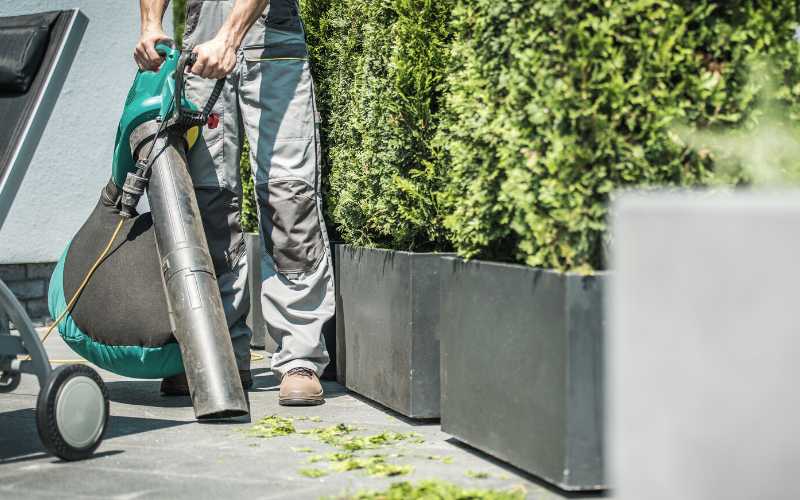
Apart from blowing leaves, some leaf blowers can mulch as well as vacuum leaves as well. Only handheld leaf blowers come with attachment for vacuuming and mulching of leaves. So, if all you want is a unit that can only blow leaves around, then you need not worry about other uses.
Handling
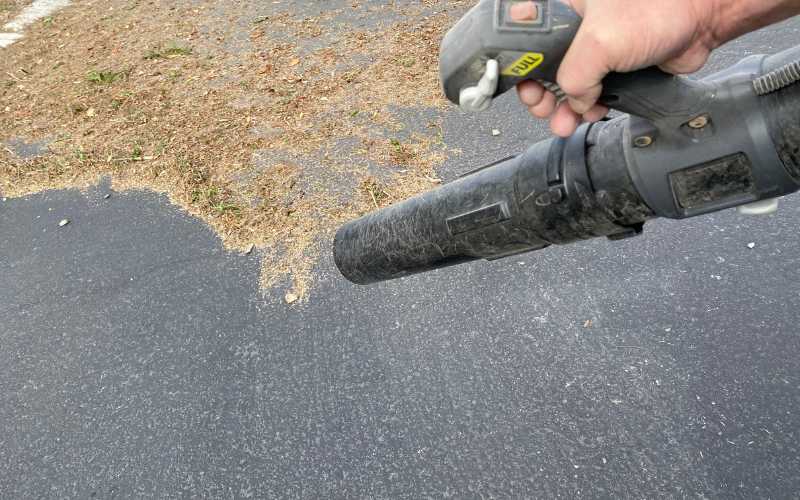
Handling is very important when it comes to using any type of leaf blower. For handheld and backpack models, if they’re not convenient to hold, it will be increasingly difficult to use them over a long period of time. So, ensure you consider the weight of a handheld unit, and the handle design. The heavier it is, the more difficult it will be to work use for a long time.
If you’ll be using it for a long periods at a stretch, consider a backpack unit. Since you’ll be carrying it on your back, the weight will not have as much effect as a handheld unit. Wheeled walk-behind units are very heavy, and might be difficult to push across a rough terrain.
Noise
Noise is another key factor to consider when choosing a leaf blower. If you leave in an area where neighbors are very close, using a gasoline unit can cause disturbance in the area. So, if you don’t want your neighbors calling the police and filing noise complaints against you, then you should consider getting a corded electric unit or a battery-powered one.
Also ensure to use ear protection and wear safety goggles when using these equipment to protect your ears from the noise and your eyes from flying dirt and debris.
Volume – Amount of leaves
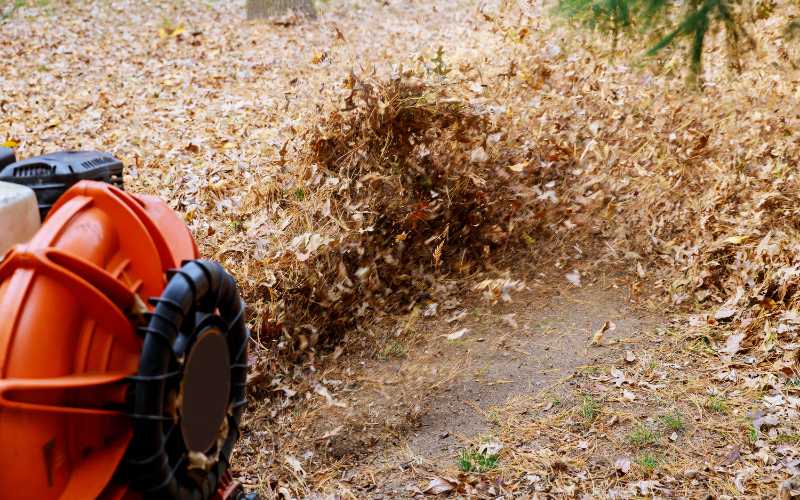
Consider how much leaves the blower can move per minute and at what rate. You can calculate this by looking at the air flow rate of the leaf blower which is measured in CFM (cubic feet per minute), and the air speed which is measured in MPH (miles per hour).
The greater the CFM, the more air is produced by the machine and the more leaves it can move, and the greater the MPH, the faster it will move the leaves.
Summary – Handheld vs Backpack vs Wheeled Leaf Blowers
Handheld leaf blowers are easy to maneuver, and are the best for projects that will take less than an hour to complete. They’re lightweight and are the least expensive of the 3 types.
Backpack leaf blowers are more powerful and heavier than handheld units. They’re ideal for large projects that will take an hour or more to complete. They also cost more than handheld units. If you run a commercial yard cleaning service, a backpack blower will be the ideal unit to go for.
If you need a very powerful unit to move huge piles of leaves fast, a wheel unit is your best bet. It’s very powerful, but more expensive than both handheld and backpack units. It’s also more difficult to maneuver especially across a rough terrain.
In terms of handling and maneuverability, handheld and backpack leaf blowers are the easiest to maneuver around obstacles. Wheeled walk-behind units are not that easy to maneuver because of their size and the position of the air outlet. Handheld and backpack units have nozzles that can be directed easily so that the leaves can be moved from any direction. A wheeled unit has an air outlet that faces only one direction and can only move leaves and debris in that direction.
Most wheeled units also require some assembling to be done before using it. Handheld leaf blowers can basically be used right out of the box with no assembly needed.
For most homeowners with a small yard and lightly scattered leaves around the yard, a small battery-powered or corded electric leaf blower should get the job done. If not, you can always upgrade to a backpack unit.

Wheeled units are best for large yards with heavy piles of leaves spread across. They’re so powerful they move heavy piles of leaves quickly. So, if you don’t have a heavy piles of leaves lying over your yard, I don’t think there’s any reason to get a wheeled unit.
So, there’s the comparison between the three types. If you think I did not mention something, please let me know through the comments below.

